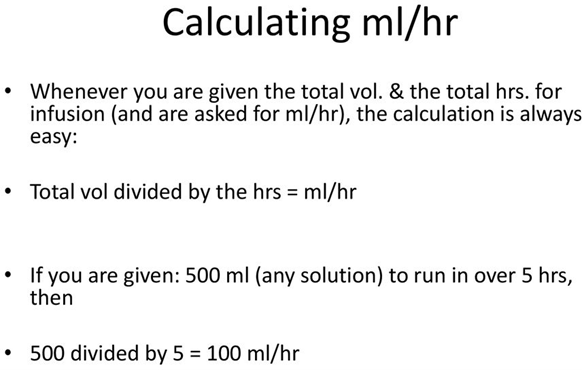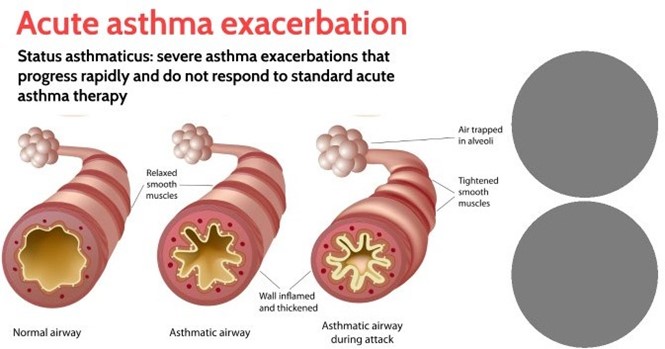A nurse is caring for a client who asks how albuterol helps his breathing. Which of the following responses should the nurse make? (Select all that apply.)
The medication will prevent wheezing.
The medication will decrease coughing episodes.
The medication will reduce inflammation.
The medication will open the airways.
The medication will stimulate flow of mucus.
Correct Answer : A,B,D
Answer: A, B D
Rationale:
-
Albuterol is a bronchodilator, and one of its key effects is to relax the muscles around the airways, which helps prevent wheezing. Wheezing is often caused by narrowed airways, and by opening them, albuterol helps to prevent this sound, which is associated with asthma or other respiratory conditions.
-
B. The medication will decrease coughing episodes:
Albuterol can help decrease coughing in individuals with conditions like asthma or chronic obstructive pulmonary disease (COPD) by relaxing the muscles in the airways, which reduces airway constriction. Since coughing often occurs due to airway obstruction, albuterol’s bronchodilator effect can help alleviate this symptom. -
C. The medication will reduce inflammation: Albuterol does not have anti-inflammatory properties. Its primary mechanism is bronchodilation, and anti-inflammatory treatment generally requires corticosteroids, not beta-agonists like albuterol.
-
D. The medication will open the airways:
This is correct. Albuterol works as a bronchodilator, meaning it opens up the airways by relaxing the smooth muscles surrounding them. This improves airflow and makes breathing easier, which is why it is often used in conditions like asthma or COPD. -
E. The medication will stimulate flow of mucus: Albuterol does not stimulate mucus production; it primarily works by relaxing the airways. However, by improving airflow, it can help clients more effectively expel mucus through coughing.
Nursing Test Bank
Naxlex Comprehensive Predictor Exams
Related Questions
Correct Answer is ["100"]
Explanation
To calculate the infusion rate, use the formula:
mL/hr = (volume of solution in mL / time of infusion in hr) x 60 min/hr
Plug in the given values:
mL/hr = (50 mL / 0.5 hr) x 60 min/hr
Simplify and solve:
mL/hr = 100 x 60 min/hr
mL/hr = 100 mL/hr
Round to the nearest whole number and add a leading zero if needed:
mL/hr = 100 mL/hr

Correct Answer is D
Explanation
Administering a short-acting beta2-agonist (SABA), such as albuterol, is the priority intervention for the nurse to take, as it provides rapid bronchodilation and relieves bronchospasm, which are the main features of status asthmaticus. Status asthmaticus is a severe and life-threatening asthma attack that does not respond to usual treatment and requires immediate medical attention.
a) Determining the cause of the acute exacerbation is important, but not the priority intervention for the nurse to take. The cause may be an allergen, infection, stress, or exercise, but it does not affect the immediate management of status asthmaticus. The nurse should focus on restoring airway patency and oxygenation first, and then identify and avoid triggers later.
b) Obtaining a peak flow reading is important, but not the priority intervention for the nurse to take. The peak flow reading measures the maximum expiratory flow rate and indicates the degree of airway obstruction. However, it may not be feasible or accurate in a child who is experiencing status asthmaticus, as they may be too dyspneic or agitated to perform the test. The nurse should rely on other signs of respiratory distress, such as wheezes, retractions, cyanosis, or pulse oximetry.
c) Administering an inhaled glucocorticoid is important, but not the priority intervention for the nurse to take. Glucocorticoids, such as fluticasone or budesonide, reduce inflammation and mucus production in the airways, but they have a delayed onset of action and are not effective for acute asthma attacks. They are used for long-term control and prevention of asthma symptoms.

Whether you are a student looking to ace your exams or a practicing nurse seeking to enhance your expertise , our nursing education contents will empower you with the confidence and competence to make a difference in the lives of patients and become a respected leader in the healthcare field.
Visit Naxlex, invest in your future and unlock endless possibilities with our unparalleled nursing education contents today
Report Wrong Answer on the Current Question
Do you disagree with the answer? If yes, what is your expected answer? Explain.
Kindly be descriptive with the issue you are facing.
